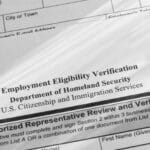Does your institution have Bankers Bank of Kansas (BBOK), Data Center Inc. (DCI) stock, or other equity securities (i.e. Farmer Mac, etc.)?
If the answer is yes, it’s important to understand the upcoming changes on how to account for these types of equity investments on your balance sheet.
Making the Change from Original Cost to Fair Value
FASB has updated ASU 2016-01, which includes accounting methods for equity investments. Most institutions currently account for these types of investments at their original cost. Effective for fiscal years beginning after December 15, 2018, all private companies will be required to account for these types of equity investments at fair value.
Does this Affect Federal Reserve Bank (FRB) & FHLBank (FHLB) Stocks?
This change does not apply to an investment in these entities.
How to Determine the Dollar Amount to Change
The bank will need to determine the fair value of its equity investment.
BBOK is updating this quarterly on their website (starting in the first quarter of 2019). At that time, you will need to calculate the fair value by multiplying the stock price by the number of shares owned.
The bank will need to contact DCI and any other organizations to get an updated market value periodically. This increase/decrease will be recognized through the income statement, and will not affect taxable income.
Steps to Take On, or Following, the Change
Once you’ve determined the current fair value and completed the calculation above, the amount of stock on the balance sheet will need to be updated periodically, and typically it will increase in value.
For example, the transaction could be structured below using the following scenario:
- Equity stock (currently carried at original cost) $20,000 (200 shares)
- Current fair value of equity stock: $250/share
- Updated fair value of stock: $50,000
DR: Equity stock asset account $30,000
CR: Equity stock income account $30,000
Should you have any questions about these determinations, or need help with transaction structure, please contact a K·Coe Isom banking advisor.










